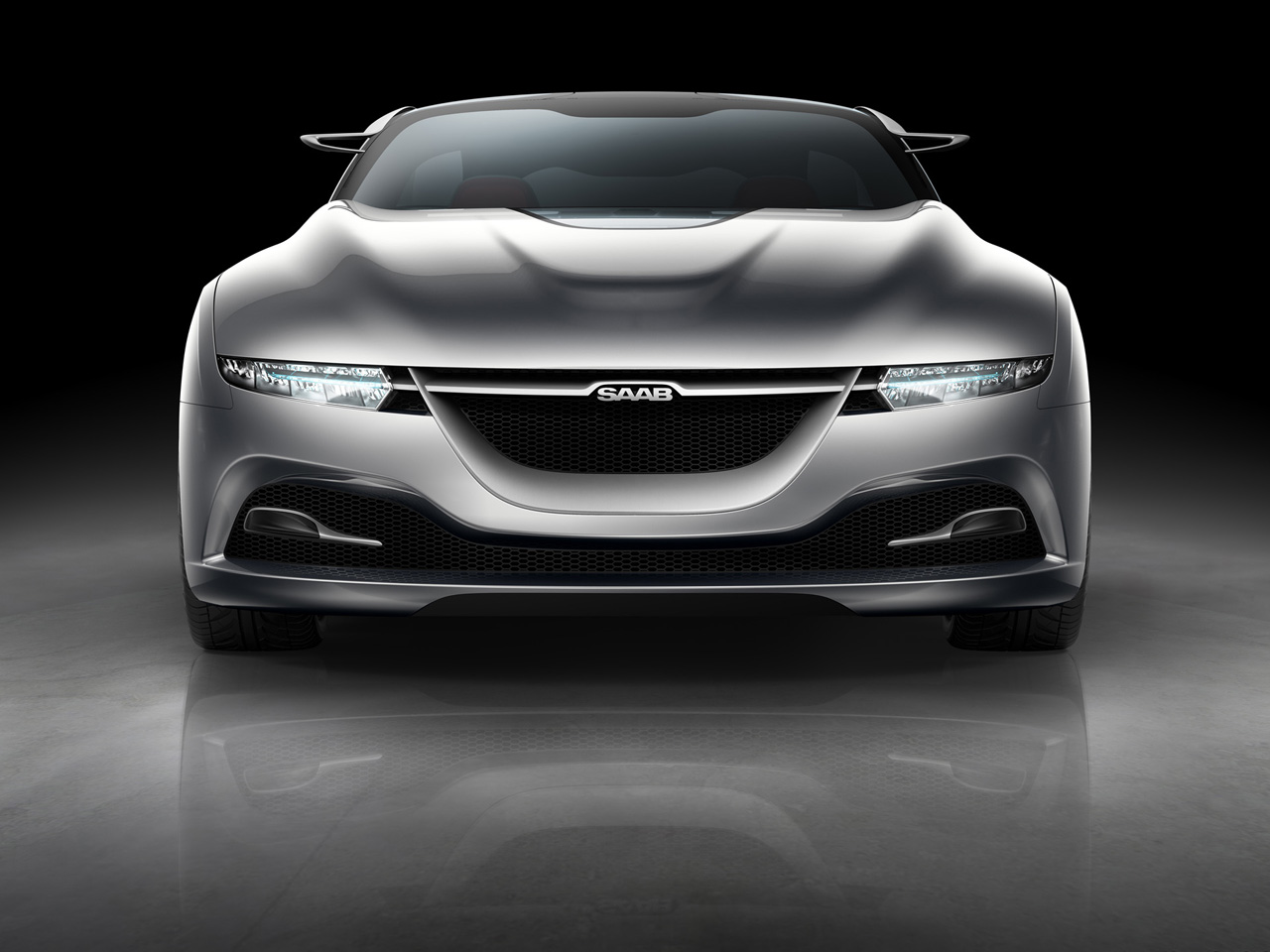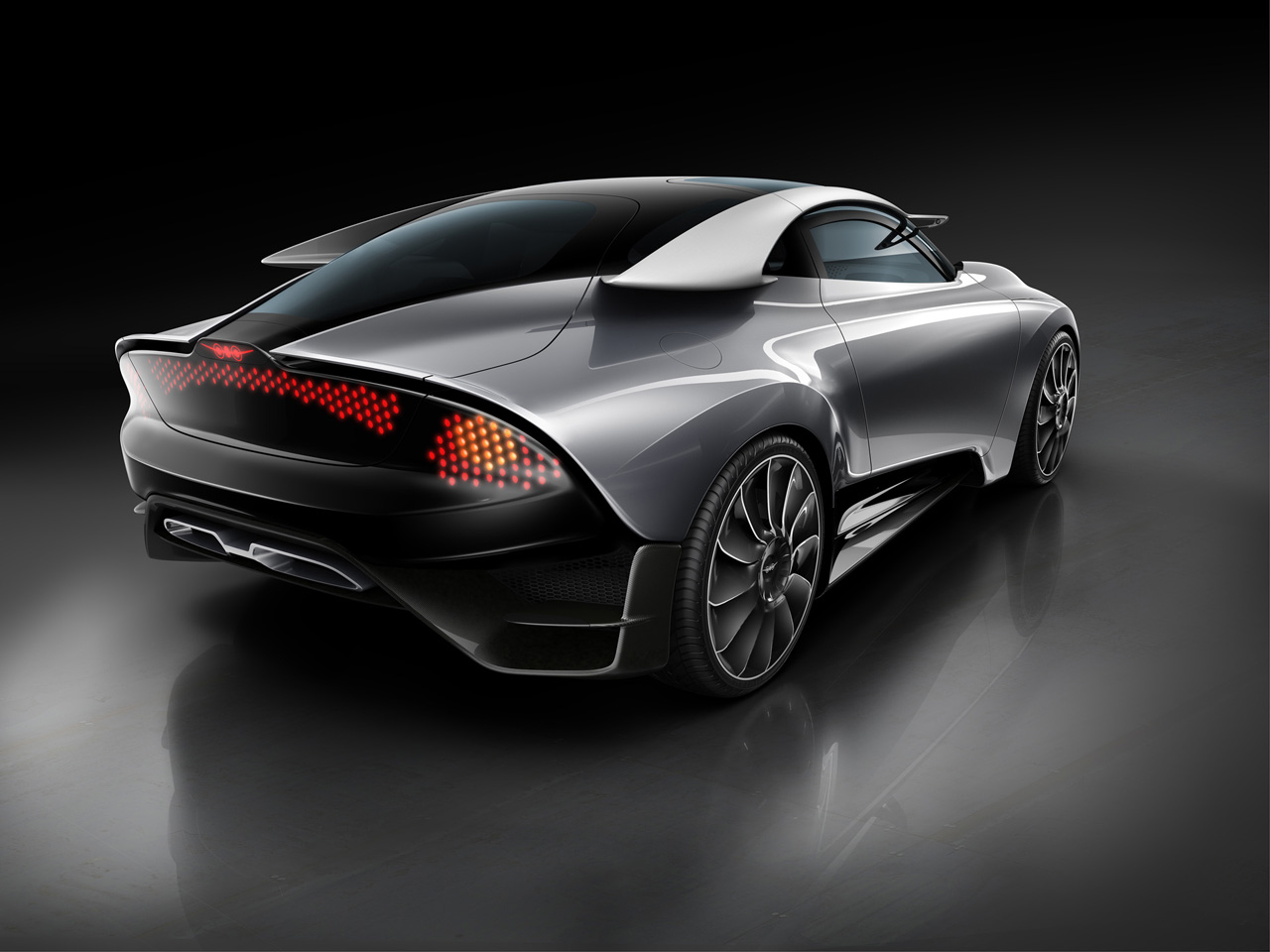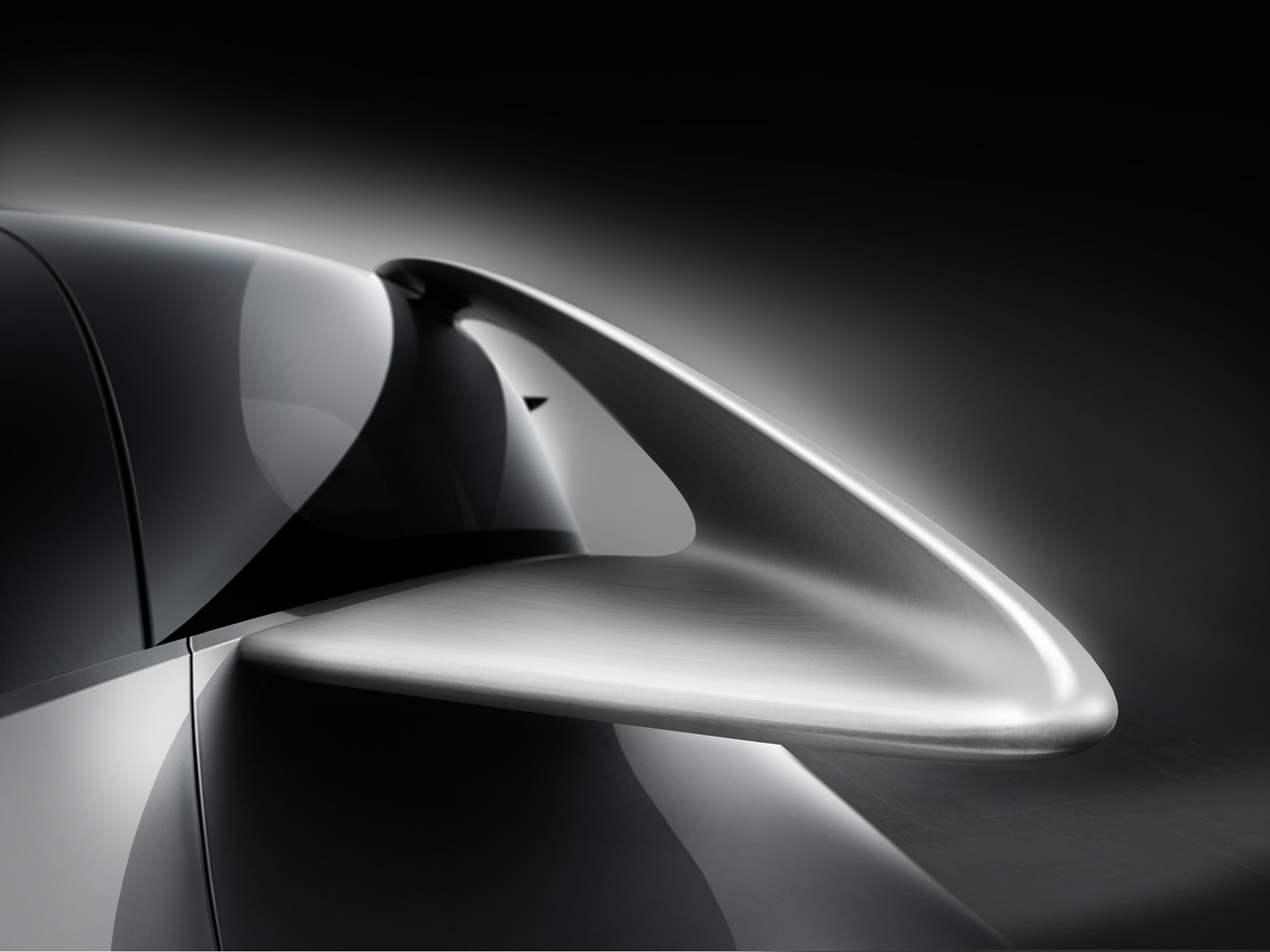2011 Saab PhoeniX Concept
|
Price |
-- |
Production |
-- | ||
|
Engine |
1.6 liter inline-4 |
Weight |
-- | ||
|
Aspiration |
turbocharged |
Torque |
-- | ||
|
HP |
200 hp |
HP/Weight |
-- | ||
|
HP/Liter |
125 hp per liter |
1/4 mile |
-- | ||
|
0-62 mph |
-- |
Top Speed |
-- |
(from Saab Press Release) Saab PhoeniX concept: The Future is Already Here
Sleek, innovative and exceptionally efficient: the Saab PhoeniX concept car showcases design features and technologies which will shape the next generation of cars from Saab.
Based on an new
architecture which will empower the next Saab 9-3 model, the PhoeniX
introduces ‘aeromotional’ design: a visual evocation of the
aerodynamic design principles and passion for innovation that
inspired the creators of Saab’s first car, the iconic Ursaab.
The PhoeniX embraces teardrop, ‘liquid metal’ forms and a dramatic
jet canopy-inspired glasshouse that gives fresh expression to Saab’s
signature ‘wraparound’ and translucent ice-block design themes.
The clean, muscular shape enables an exceptionally low drag
co-efficient of just 0.25 and also explores the potential for
airflow management through the use of distinctive, side-mounted
‘winglets’.
Butterfly opening doors give easy access to a 2+2 cabin that blends
simplicity with technology. It has a minimalist, ‘stripped out’
feel, including a new expression of Saab’s driver-focused layout and
a world debut for Saab’s innovative IQon infotainment and
communications system. In true Saab tradition, there is also a
surprisingly versatile cargo deck.
“The PhoeniX establishes
a new reference point for the future of Saab product design,” says
Jason Castriota, Saab Automobile’s Executive Design Director. “It
symbolizes a renaissance of the innovative spirit and passion that
drove Saab to build its first car. We’re now taking the visual DNA
forward with what we call ‘aeromotional’ design, adding emotion,
power and fluidity. This design aesthetic will shape and
differentiate future models in the Saab portfolio.”
Under its rippling bodywork, the Saab PhoeniX deploys an innovative
driveline, with an electrically-driven rear axle mated to a
sophisticated 200 hp, 1.6-liter gasoline turbo engine. The result is
an intelligent, hybrid all-wheel-drive capability that enhances
driving pleasure while reducing fuel consumption. Combined cycle
fuel economy and CO2 emissions are projected to be just 5.0 l/100 km
and 119 g/km.
Aeromotional design
The PhoeniX’s
‘aeromotional’ design theme is inspired by Saab’s aviation roots and
draws expression from Ursaab, the prototype designed by aircraft
engineers that spawned Saab’s first generation of cars.
The entire form of the PhoeniX is seemingly molded by the wind.
Tightly-wrapped by a liquid-like skin, the teardrop cabin resembles
a dark ice block and appears to erupt from the center of the
muscular bodywork. Two prominent ripples flow along the hood into
the disguised windshield pillars, as if barely able to contain a
powerful structure underneath.
At the rear, the dark screen also bursts through the outer skin of
the rear deck, The tapering form hints at the teardrop rear styling
of Ursaab, while the ‘sawn off’, kamm tail echoes a form from Saab’s
first coupé, the Sonett.
The low, frontal styling features a stretched interpretation of
Saab’s signature three-port grille. A body-colored central wing is
now dominant and, in keeping with the car’s minimalist design, LED
headlamps are almost invisibly located at its tips. The new grille
and hood forms are among the styling themes likely to be seen in
future Saab production cars.
Butterfly-opening doors provide enhanced access to the low-slung
cabin. There are no visible door handles or mirrors to disrupt
airflow, and small cameras on slim stalks provide rearward vision.
Roof-mounted ‘winglets’ enable PhoeniX to cleave the air as
efficiently as possible. They channel airflow from the side of the
car and direct it across the rear deck, reducing lift forces for
greater stability without increasing drag.
Minimalist interior
In true Scandinavian
tradition, the 2+2 cabin adopts a clean, minimalist look. It has the
‘stripped out’ feel of a competition car, with shell-like seats and
metalized interior sections that mimic the exposed network of a
rollover cage.
Fresh expression is given to Saab’s traditional, driver-focused
instrument layout. A circular pod in front of the driver, shaped
like the afterburner of a jet engine, presents data in tandem with
the head-up display.
Angled at 45º to the driver, a separate module accommodates Saab’s
advanced IQon infotainment and communications system. For good
ergonomics, the 8-inch touch-screen is as close to the driver’s
finger tips as the steering wheel.
Saab IQon (see separate release for full details) is a
ground-breaking car communications platform using Google's AndroidTM
operating system. Based on pioneering ‘open innovation’ with
third-party service providers and applications developers, it
comprises an embedded computer platform which seamlessly connects to
the internet when the car’s ignition is switched on. The
touch-screen provides access to audio and entertainment streaming,
online navigation, on-board music storage and smartphone-like
downloading of applications.
Red illumination for all instrument and ambient cabin lighting
brings warmth and emotion to the cabin. This includes the floor,
where LED light tubes are exposed by perforations in the black
carpeting. It is all part of the new ‘aeromotional’ design strategy,
incorporating ‘fire and ice’ effects.
The PhoeniX’s curvaceous rear deck disguises a deep-opening
tailgate. It gives access to a flat cargo deck, including fold-flat
rear seatbacks and a cargo track for adaptable load carrying.
Efficient propulsion
Under its sculpted hood
and beneath its cargo deck, the PhoeniX advances Saab’s rightsizing
powertrain strategy. Its propulsion system combines a highly
efficient, 1.6-liter turbo engine with innovative, electric rear
wheel drive technology.
The compact, all-aluminum gasoline engine packs 200 hp (147 kW) and
includes variable valve timing and lift control, as well as
start/stop functionality, minimal parasitic losses and a fuel
cut-off function. A stainless steel tank is fitted, which is lighter
and less expensive than a conventional plastic design,
The engine is supported by Saab’s innovative eXWD system. It
comprises a rear drive unit housing a 25 kW (34 hp) electric
motor/generator powered by a small battery pack. Regenerative
braking is used to sustain the battery’s charge.
Now under development for the next generation of Saab cars, this
hybrid propulsion system enables the benefits of all-wheel-drive
while also reducing fuel consumption. Using a six-speed manual
transmission, projected combined cycle fuel economy and CO2
emissions are just 5.0 l/100 km and 119 g/km.
The driver can select one of three eXWD operating modes. The default
Eco mode delivers optimal fuel and CO2 efficiency with power
assistance to reduce load on the gasoline engine at low speeds;
Sport mode includes maximum power assistance with torque vectoring
across the rear axle for greater chassis control; and Traction mode
enables optimal grip at take-off and in slippery conditions.
Inside and out, the Saab PhoeniX showcases new design directions and
technologies that will be part of forthcoming Saab products.



